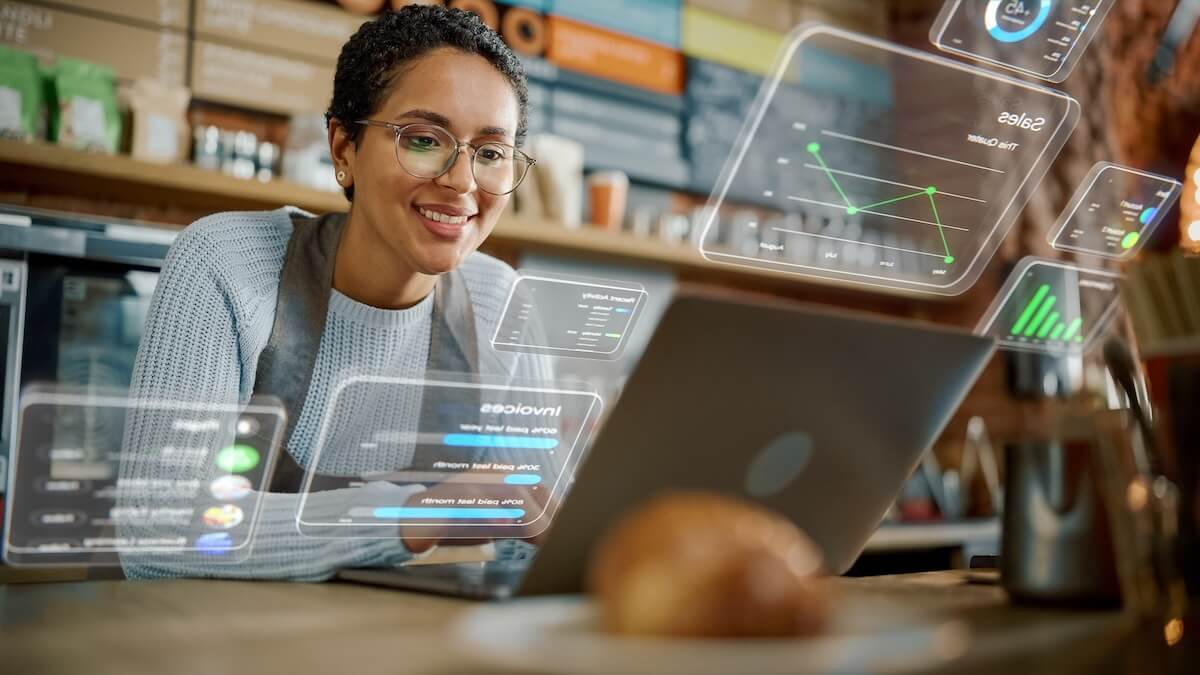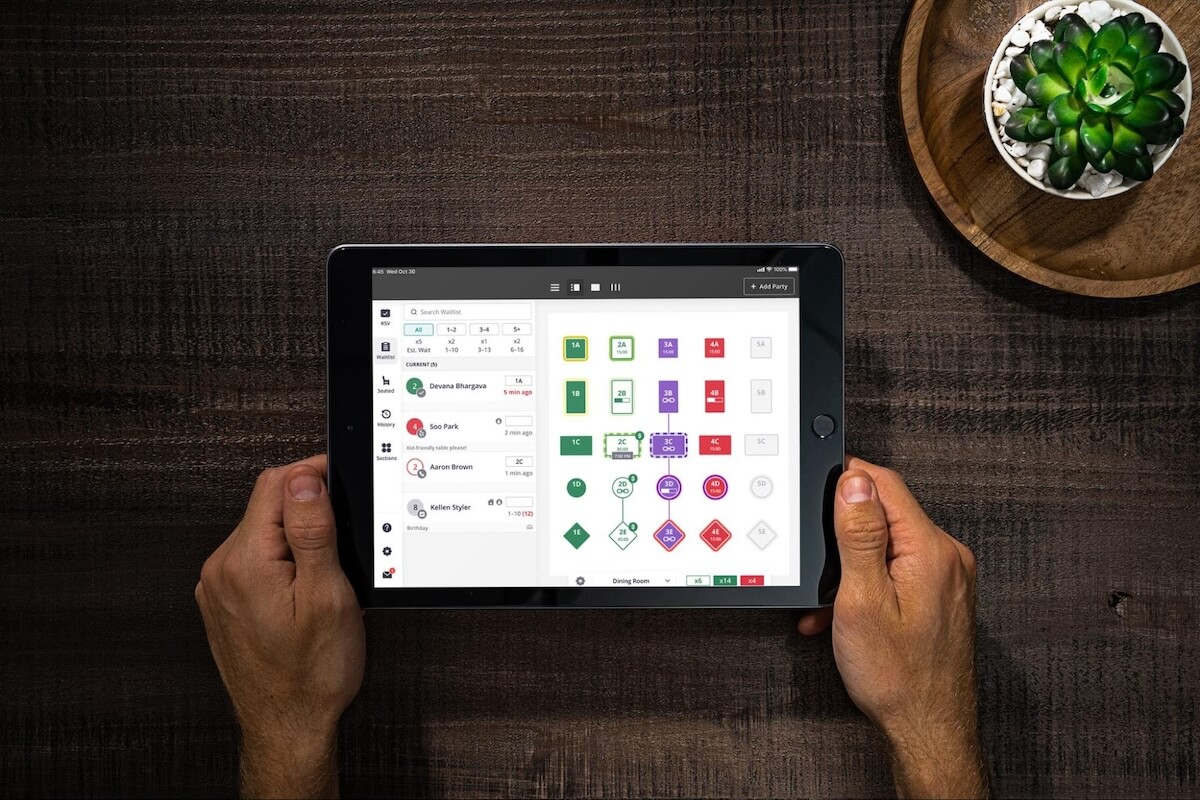How restaurant table management systems make life easier
Skip the article and turn takeaways into action by scheduling a call with our team.
If you were to take someone from, say, 1980, and show them modern restaurant table management systems, it’d be like taking someone from now and putting them aboard the Starship Enterprise. That is, things have changed a lot, and fast. As front-of-house (FOH) systems approach what appears to be a singularity, the whole staff benefits from automation and improved software functionality.
For customers, this improved restaurant technology means an improved dining experience—and really an improved guest experience the whole way through their interaction with the restaurant. For restaurateurs, it means higher revenues, smarter table assignments, customizable floor plans, and, in general, a more valuable dining room.
There are a ton of tools that come with solid table management systems that make life in the restaurant industry easier. Don’t worry—we’ll cover all the ways restaurant operations can be improved here.
For those looking to get up to date with table management, you’re in the right place. First, though: Why does it matter to have a good table management system?
5 benefits of a restaurant table management system

In the times of yore, table management was done on paper or perhaps a whiteboard, and during busy times it could become excruciating for both the staff and the customer experience. Servers had to navigate complicated, messy seating arrangements, hosts had to keep impatient guests at bay, and reservations were handled with pen and paper.
What’s more, wait times were unpredictable, restaurant owners had to wade through mountains of paper to collect good metrics, customers received no notifications about waitlists they were on, and real-time communication looked like asking the host, “When will our table be ready?”
This is no longer the case thanks to modern table management software. And just like a calculator is better at performing quick calculations than even the smartest person, good table management software is way better at running a FOH than a bunch of human brains assembled.
Let’s get a bit more specific about what a good table management system can do.
1. Maximize seating capacity and revenue
Full tables make a restaurant money. That’s the name of the game. Every empty table represents a missed opportunity for revenue. So, effective table management makes sure that all available tables are used efficiently, maximizing the restaurant’s seating capacity. By accurately tracking table status, wait times, and turnover rates, restaurateurs and managers can make their seating arrangements work harder for them and their customers. Smarter choices in seating lead to increased revenue and profitability.
2. Minimizing wait times and improving customer satisfaction
Nobody likes to have their time wasted with long wait times. Diners over the age of 30 probably have not-so-fond memories of sitting bored in a restaurant’s waiting area. Then and now, long wait times mean lost business.
A solid table management system helps minimize wait times by accurately estimating table availability and wait times—for example, Yelp Guest Manager quotes wait times with up to 92% accuracy. This helps customers know how long their wait will be so they don’t have to sit around staring at a buzzer and can otherwise make more productive use of their time. If the wait time is too long, they’ll know to go somewhere else and won’t develop negative feelings towards your business.
3. Streamlining operations and improving efficiency
Anyone who’s tried manual table management processes knows they can be time-consuming and cause all sorts of miscommunications. Implementing table management software allows restaurant staff to automate tasks like taking online reservations, assigning tables, and tracking wait times. This saves both time and mistakes for everyone involved. Streamline operations and improve efficiency so staff focus on creating a top-notch customer experience instead of pulling their hair out over what’s basically paperwork.
4. Improved communication and coordination
Effective table management requires seamless communication and coordination between the entire FOH staff: hosts, servers, managers, bussers, bartenders, and more. So, a good table management system will do just that: centralize communications and present them on a platform where all staff can see what’s up and make changes as needed. This presents a staff-wide game of telephone and lets everyone be on the same page when it comes to seating, serving, and so on.
Good communication and accurate wait times help cut down on no-shows as well, especially since restaurants can communicate directly with customers via SMS with Yelp Guest Manager. Yelp Guest Manager customers have average no-show rates below 10%.
5. Improved analytics and reporting
A good table management system will give a restaurant owner analytics and reporting tools that allow for smart, long-term decision making. Tools like Yelp Guest Manager provide data on table turnover rates, wait times, and customer preferences, allowing for smarter decision-making in staffing and pricing, for example.
A good table management system helps store guest data like dietary preferences, important dates like birthdays, and more—which can help boost customer retention. Over time, you can build guest profiles so that when a regular walks in the door, your ever-clever servers can have their favorite beverage waiting for them.
Syncing with other systems

A good table management system rarely operates on its own. It’ll need to pair with your POS system, inventory management system, back-of-house system, and more. Optimizing your software means you’ll want a software suite that works together well, and we can happily say Yelp Guest Manager does just that with quite a few other systems, and works as its own CRM.
POS systems have come a long way recently. Payment processing is often now done at the table rather than at the cash register. Customers can pay with their credit card via a server’s iPad or credit card machine for fast and easy tableside service, allowing for faster turn times, which makes for higher revenue via walk-ins.
What about the learning curve?

Learning any new piece of software can be tricky, even for the most tech-literate among us. So, you’ll want a guide to get through the early stages when you’re not quite sure what you’re doing, and when a few minutes lost during a busy rush can lead to chaos.
There’s nothing quite like chaos in a restaurant, and anyone who’s experienced it wants to avoid it at all costs. So, having a single point of contact to help resolve problems with a table management system is a smart idea.
Yelp Guest Manager does just this: We provide an onboarding manager for the duration of the process who’s on call specifically for you and can help put out fires whenever necessary. They can also fix problems before they arise by helping restaurateurs and managers make the smartest decisions for their restaurants.
Ready to level up?
So, we’ve talked about a table management system’s benefits for all. Yes, we’re a bit biased, but we stand by Yelp Guest Manager, which does everything listed in this article and then some. It helps customers enjoy their entire journey with your restaurant, from finding you to making a reservation, hopping on a waitlist, or finding an open table via the Yelp app.
If you’re looking to boost your online ordering, Yelp Guest Manager syncs with some of the best third-party delivery services in the business as well.
Want to see if it’s right for you? Curious to take a look? Reach out to us for a free demo and we’ll be happy to get started. The future is now, and getting the best table management system is one of the smartest moves a restaurant owner can make.